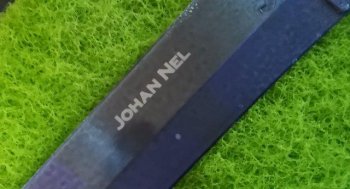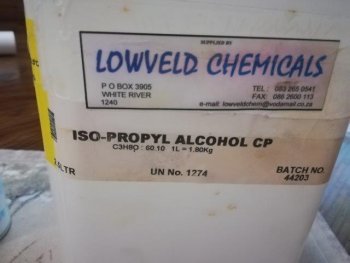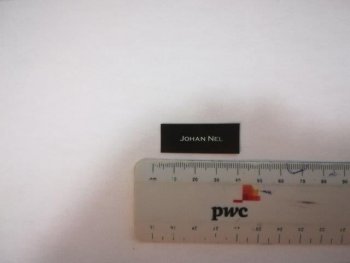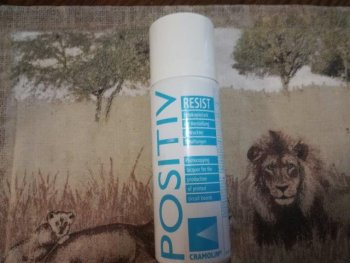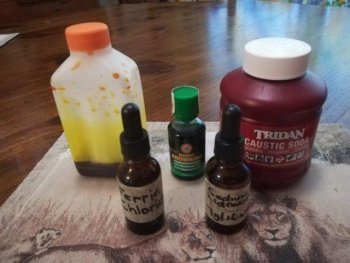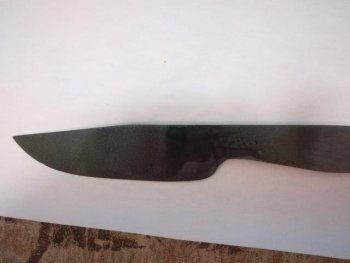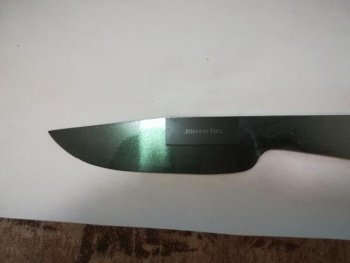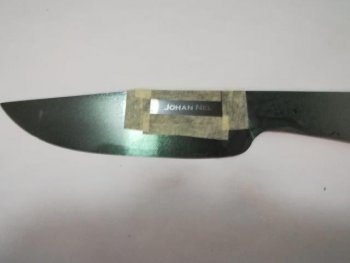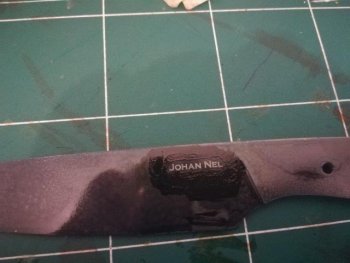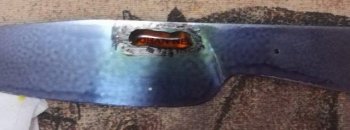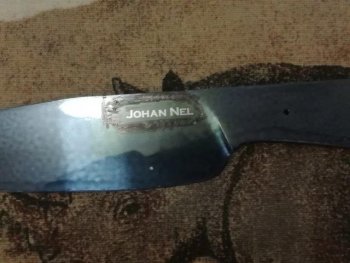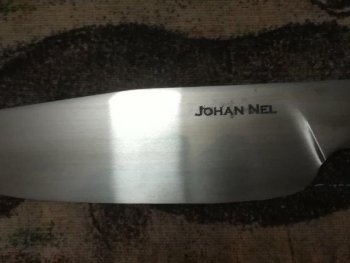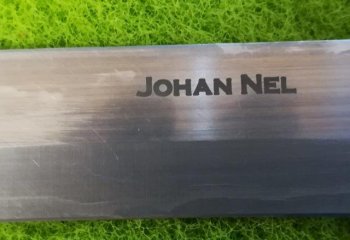Next, the blade is exposed to bright light, so that the light will cause a reaction to the exposed photo-resist. The dried photo-resist has a greenish hue that turns blue-ish when exposed to sunlight. As I am staying in sunny South Africa where we have sunlight for at least 90% of the year, I need not worry about artificial lighting to facilitate the exposure.

Apparently a few seconds is sufficient, but if little is good, more must be better

, so l let it be exposed for a minute or more.
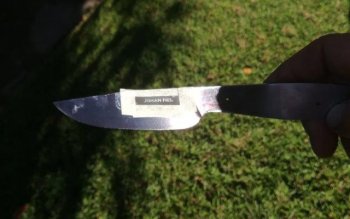
Once back inside, I remove the logo and the next stage can start. This entails the caustic soda solution to be applied over the light exposed area.
Just a note on the preperation of the solution. It is prepared by dituting 7 grams of caustic soda to one litre of water. I bought some at the local grocery store where it is sold as drain cleaner.
Since you use so little of this, mixing a litre of this may be overkill. I have a small electronic scale, so I reduced the caustic soda to 0.7 gram and diluted it in a 100ml of water. The flip side of the coin is that this is so inexpensive and the larger volume is easier and more accurate to weigh, so you can decide what method you want to follow, should you decide to try this out. The solution is to be placed in a dark container, as this also reacts with light and will lose its effectivity, so I placed it in a dark glass bottle with a dripper which I bought at the local pharmacy. The dripper makes for easy application.
The blade is made to lie flat and level, and the caustic soda is dripped over the area where the logo was. The reaction is quite fast. Once the reacted photo resist has been dissolved by the caustic soda, the solution can be removed. I do this by using the dripper to suck it back up, but I then discard that in a paper towel. I also use a paper towel to lightly dab the area to remove any remaining solution. Again, be careful not to scratch the remaining film, as any exposed area will react to the ferric chloride to be applied hereafter.
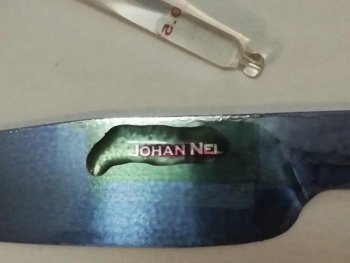
Not the same blade, but this is what the end result of a properly executed process should looks like after the caustic solution is removed. Just a note of interest. The lettering of the example below is quite thick, and this happened because the photo negative logo was not dead flat against the blade while exposed. This resulted a thicker lettering.
